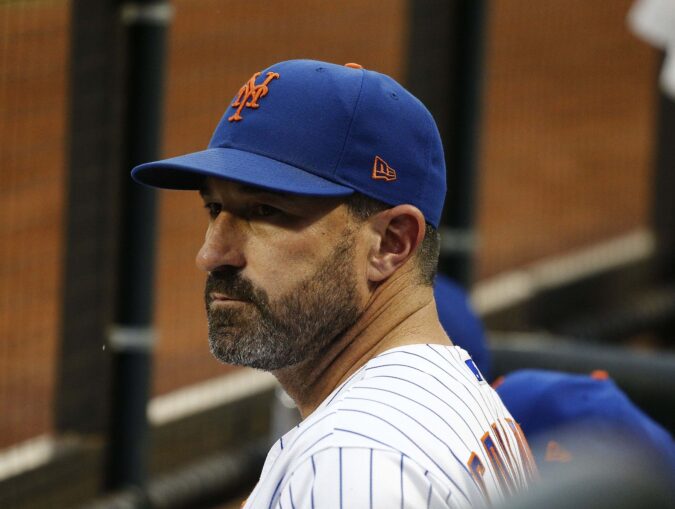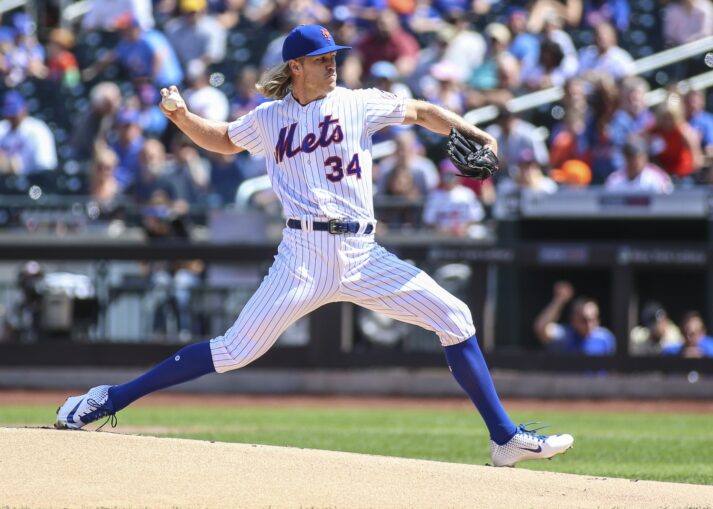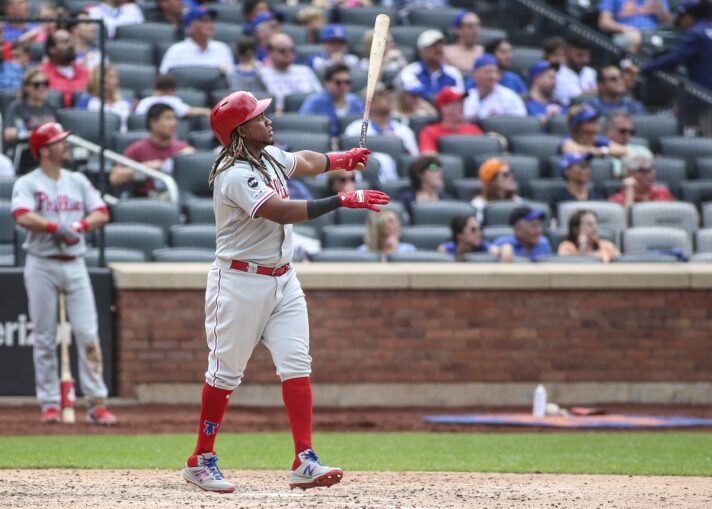
This season has been wrought with ups and downs, but many of those downs seem to have been caused by poor decisions by manager Mickey Callaway. Sunday was no exception, as multiple awful decisions by Callaway cost them a crucial win, quite possibly condemning the Mets to a fourth place finish and another disappointing season.
The first big in-game decision for a National League manager usually comes when it is time to pinch-hit for the starting pitcher. Sunday, Callaway decided that would come in the fifth inning. Noah Syndergaard had completed five innings having thrown just 78 pitches. He’d allowed four earned runs on six hits and one walk with five strikeouts, and while he didn’t have his best stuff, a strong argument could be made that Syndergaard is more trustworthy than almost anyone in the bullpen – especially with four innings left in the game.
Despite this argument, Callaway lifted Thor in the 5th in favor of a pinch hitter. Syndergaard could be seen throwing his helmet in the dugout upon hearing of his removal from the game, but Callaway had already made his choice. With the bases loaded, two outs, and a tie score, Todd Frazier came up to try and give the Mets the lead. He struck out and the inning was over.
I can understand the decision to try and capitalize on the bases loaded situation. However, you must keep in mind a few things, the first of which being that Syndergaard is the Mets’ second best starting pitcher, and with the exception of Seth Lugo, is arguably better than any reliever in the bullpen. Second, Syndergaard is no slouch with the bat. Third, the Phillies had already lifted their starter Vince Velasquez, and their bullpen has been as troubled as the Mets’.
With these things in mind, I would argue to leave him in to hit. If he gets a hit, great! If he doesn’t, then the Mets are left in the same tie game situation, however in this parallel universe, they still have Noah Syndergaard to go a few more innings rather than the bullpen.
A funny thing about baseball is that when a manager makes a decision, the quality of that decision is almost always determined by the outcome. If Todd Frazier had gotten a hit or even walked, and the Mets had taken a lead, it could have been seen as a good move if in that parallel universe the bullpen held the lead. Unfortunately for Callaway, Frazier struck out, and because Syndergaard was removed in the fifth inning, the struggling Mets’ bullpen was counted on to record 12 outs.

Paul Sewald (who allowed four earned runs in 1/3 of an inning his last time out) was brought in to start the 6th inning against Rhys Hoskins, who crushed a lead-off double. Scott Kingery then laid down an almost perfect bunt and would have had a hit if Jeff McNeil hadn’t made a perfect David Wright-esque barehand to get the out at first. At that point, Sewald was lifted for Luis Avilan.
Bringing in Paul Sewald was a mistake, as it almost always turns out to be. The only rationale I could find is that Hoskins is 0-for-4 with two strikeouts against Sewald in his career and Kingery is 0-for-2 with a walk and two strikeouts. However, those are two goo hitters facing a struggling pitcher with a career 5.22 ERA, so such a small sample size needs to be thrown out the window.
Avilan was brought in to face the left-handed Adam Haseley with a runner on third and one out, which I can understand but disagree with. Haseley, a rookie with a .700 OPS, is not a threat like Bryce Harper; There is no need to bring in one of your only trustworthy relievers in the 6th inning (especially with lefty hitters like Harper, Jay Bruce, and Logan Morrison on the Phillies bench) to face this guy. Daniel Zamora seems a more logical choice.
Haseley was lifted for a right-handed pinch hitter, Phil Gosselin. Coming into the game, lefties had been hitting .077/.143/.103 in 42 plate appearances against Avilan while righties had been hitting .353/.450/.529 in 80 plate appearances against him. When a reliever is brought in they must face one hitter, and this one blooped an RBI single into the outfield. What happened next is unexplainable.
Maikel Franco, a right-handed hitter who is 1-for-2 against Avilan, strolled to the plate. The obvious move is to take Avilan out of the game, but Callaway left him in. A few pitches later, Maikel Franco drove one into the upper deck in left field, giving the Phillies a 7-4 lead. With a switch-hitter and the pitcher’s spot due up, now is obviously the time to take Avilan out, right?
Nope.
Avilan was left in to face three more right-handed hitters (two switch-hitting) and Callaway got away with it as only one of them got a hit – an instance of a normally bad decision being good due to the outcome.
But wait, there’s more. Justin Wilson was brought in to face the top of the Phillies lineup which of course is a fine decision, but he was burned when a Jean Segura single and a Scott Kingery home run (with two strikeouts in between) extended the Phillies’ lead. Kingery’s home run came on Wilson’s 30th pitch of the inning as he’d thrown 22 to the three batters preceding him. Wilson should have been removed before facing Kingery, who holds a .873 OPS against left-handed pitchers.

Tyler Bashlor was then brought in to face Sean Rodriguez who he walked on seven pitches, before Maikel Franco (2-for-2 with a double and two RBIs against Bashlor in their careers before this game) added to his big game with a double to put runners on second and third with two outs.
What happened next was even worse than letting Luis Avilan face five right-handed batters.
With an open base, Mickey Callaway opted to intentionally walk Andrew Knapp (.196/.328/.262 on the season) to load the bases, bringing Bryce Harper to the plate. Did Callaway not see Harper standing by the bat rack with a helmet on? Did Callaway forget hitters like Jay Bruce, J.T. Realmuto, and Logan Morrison also lurked in the Phillies dugout? Or worse, would Callaway rather Tyler Bashlor had faced any of those hitters rather than the weak-hitting Knapp?
After the game, Callaway told reporters that he walked Andrew Knapp intentionally so the Phillies would have to remove reliever Mike Morin from the game. To be clear, Mickey Callaway said he would rather have pitched to Bryce Harper than Andrew Knapp with the bases loaded and two outs in the 6th inning so Mike Morin (4.15 ERA and 4.39 FIP in 43.1 innings) would be removed from the game.
Whether that rationale is the truth or not, Callaway dropped the ball here.
Anyway, with the bases loaded, Bashlor walked Harper to force home a run. To compound the curiosity, after the left-handed Harper walked, Callaway brought in the lefty Daniel Zamora to face the switch-hitting Cesar Hernandez.
So… Why didn’t Callaway bring in Zamora to face Harper? If what he said post-game was true, he would have known Harper was coming up. It’s possible Zamora wasn’t ready, which would be Callaway’s fault too. Mickey fell dead asleep at the wheel this inning but was bailed out by Zamora who finally induced an inning-ending groundout.
Edwin Diaz and Jeurys Familia threw perfect 8th and 9th innings respectively. Sewald, Avilan, Wilson, Bashlor, and Zamora combined to allow six earned runs in two innings. Syndergaard had thrown only 78 pitches which means he was good for at least one more inning, quite possibly two or even three. I would trust Noah Syndergaard far more to give me scoreless 6th and 7th innings than that bunch of relievers.
Callaway has made countless errors this season, and these are only the most recent. He has proven time and time again that he does not have what it takes to manage a National League team on the field, and most specifically, he does not know how to manage the bullpen. Yes, this game could have gone many directions — But it didn’t. The Mets lost, and it’s on Callaway.















